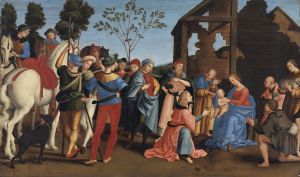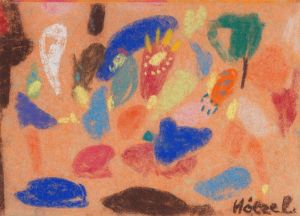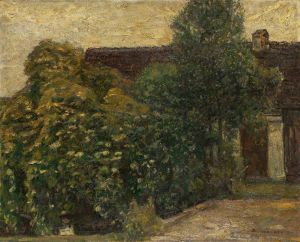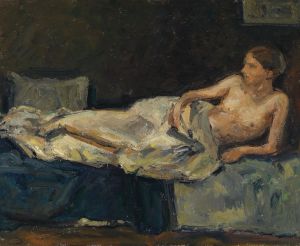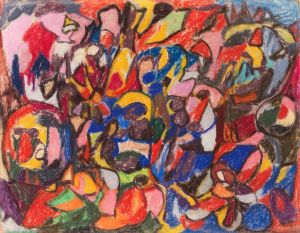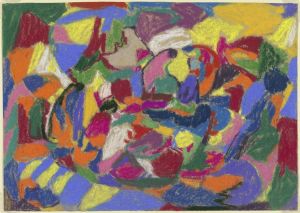
The Nativity
A hand-painted replica of Adolf Hölzel’s masterpiece The Nativity, meticulously crafted by professional artists to capture the true essence of the original. Each piece is created with museum-quality canvas and rare mineral pigments, carefully painted by experienced artists with delicate brushstrokes and rich, layered colors to perfectly recreate the texture of the original artwork. Unlike machine-printed reproductions, this hand-painted version brings the painting to life, infused with the artist’s emotions and skill in every stroke. Whether for personal collection or home decoration, it instantly elevates the artistic atmosphere of any space.
Adolf Hölzel was a German painter and art teacher, known for his contributions to modern art and his influence on the development of abstract art in the early 20th century. One of his notable works is "The Nativity," which reflects his unique approach to color and form, as well as his interest in religious themes.
"The Nativity" by Adolf Hölzel is a painting that captures the traditional Christian theme of the birth of Jesus Christ. Hölzel's interpretation of this subject is distinctive due to his innovative use of color and abstraction. While the exact date of the painting is not clearly documented, it is believed to have been created during the period when Hölzel was actively exploring new artistic styles and techniques, likely in the early 20th century.
Hölzel was a pioneer in the use of color theory and abstraction, and these elements are evident in "The Nativity." Instead of focusing on realistic depictions, Hölzel emphasized the emotional and spiritual aspects of the scene through his use of vibrant colors and simplified forms. This approach aligns with his broader artistic philosophy, which sought to transcend traditional representation and evoke deeper emotional responses from the viewer.
The composition of "The Nativity" is characterized by its dynamic arrangement of shapes and colors. Hölzel often employed a technique known as "color orchestration," where colors are used in a harmonious and expressive manner to convey meaning and emotion. In this painting, the figures of Mary, Joseph, and the infant Jesus are likely depicted in a stylized manner, surrounded by an array of colors that suggest a sense of divine presence and celebration.
Hölzel's work was influential in the development of abstract art, and his teachings inspired many artists who later became prominent figures in the abstract movement. As a teacher at the Stuttgart Academy of Fine Arts, Hölzel encouraged his students to experiment with form and color, laying the groundwork for future explorations in abstraction. His emphasis on the spiritual and emotional potential of art resonated with many artists of his time and contributed to the evolving landscape of modern art.
"The Nativity" exemplifies Hölzel's commitment to exploring the intersection of spirituality and abstraction. By reinterpreting a traditional religious theme through the lens of modern art, Hölzel not only paid homage to his subject matter but also pushed the boundaries of artistic expression. His work continues to be studied and appreciated for its innovative approach and its role in the broader narrative of art history.
In summary, "The Nativity" by Adolf Hölzel is a significant work that reflects the artist's pioneering contributions to modern art. Through his use of color and abstraction, Hölzel offered a fresh perspective on a timeless theme, leaving a lasting impact on the art world and influencing generations of artists who followed in his footsteps.





